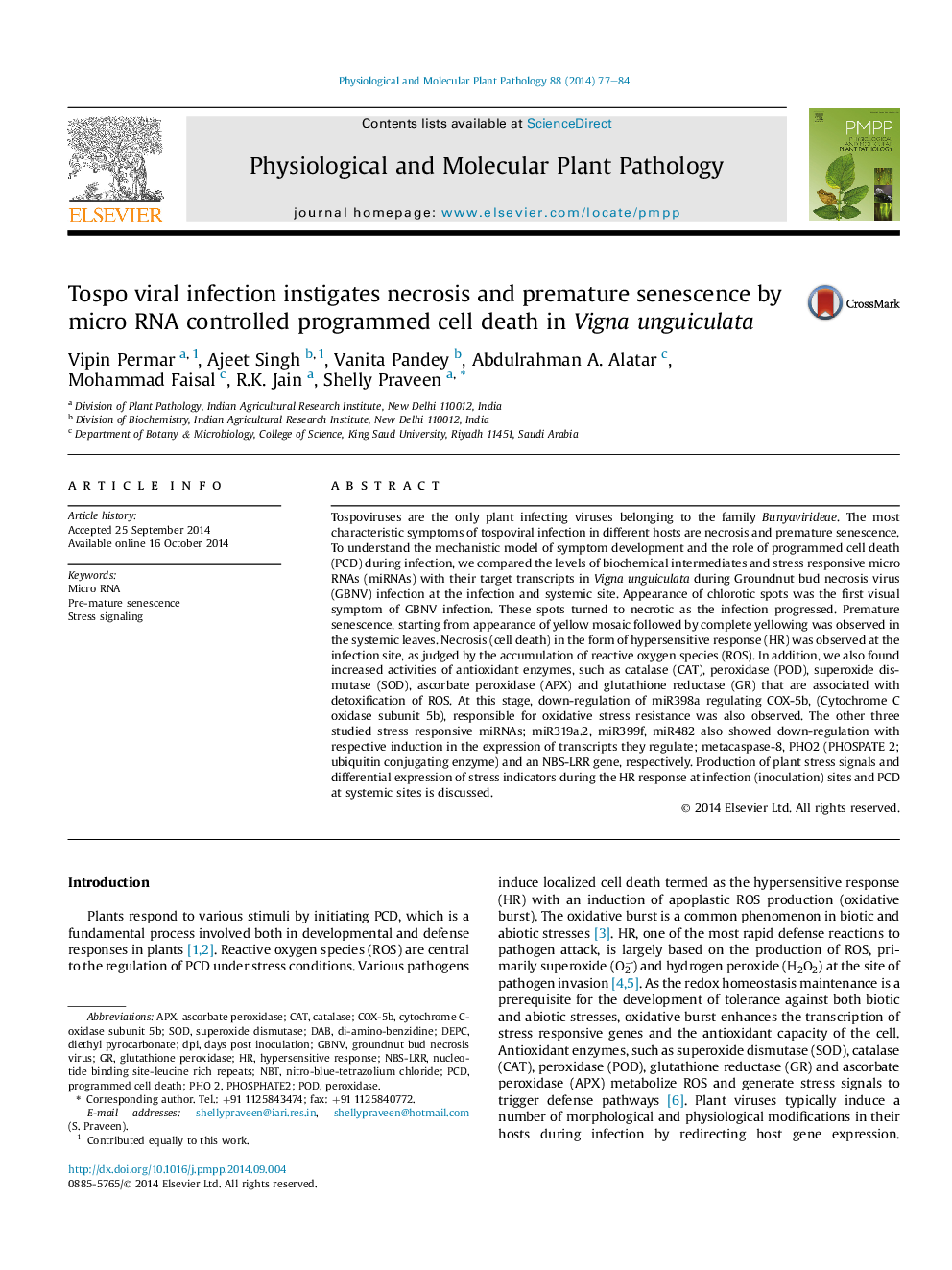| Article ID | Journal | Published Year | Pages | File Type |
|---|---|---|---|---|
| 2836305 | Physiological and Molecular Plant Pathology | 2014 | 8 Pages |
Tospoviruses are the only plant infecting viruses belonging to the family Bunyavirideae. The most characteristic symptoms of tospoviral infection in different hosts are necrosis and premature senescence. To understand the mechanistic model of symptom development and the role of programmed cell death (PCD) during infection, we compared the levels of biochemical intermediates and stress responsive micro RNAs (miRNAs) with their target transcripts in Vigna unguiculata during Groundnut bud necrosis virus (GBNV) infection at the infection and systemic site. Appearance of chlorotic spots was the first visual symptom of GBNV infection. These spots turned to necrotic as the infection progressed. Premature senescence, starting from appearance of yellow mosaic followed by complete yellowing was observed in the systemic leaves. Necrosis (cell death) in the form of hypersensitive response (HR) was observed at the infection site, as judged by the accumulation of reactive oxygen species (ROS). In addition, we also found increased activities of antioxidant enzymes, such as catalase (CAT), peroxidase (POD), superoxide dismutase (SOD), ascorbate peroxidase (APX) and glutathione reductase (GR) that are associated with detoxification of ROS. At this stage, down-regulation of miR398a regulating COX-5b, (Cytochrome C oxidase subunit 5b), responsible for oxidative stress resistance was also observed. The other three studied stress responsive miRNAs; miR319a.2, miR399f, miR482 also showed down-regulation with respective induction in the expression of transcripts they regulate; metacaspase-8, PHO2 (PHOSPATE 2; ubiquitin conjugating enzyme) and an NBS-LRR gene, respectively. Production of plant stress signals and differential expression of stress indicators during the HR response at infection (inoculation) sites and PCD at systemic sites is discussed.
